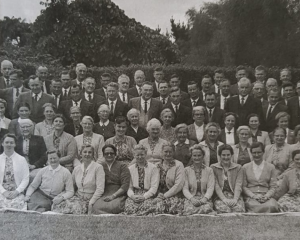Hundreds of leaky home owners stand to gain from a Supreme Court test case that could open the doors to their claims being heard, a lawyer says.
Auckland couple John and Helen Osborne thought their claim against Auckland Council would be heard by the Weathertight Homes Tribunal, but were told the claim was ineligible because it was lodged after the statutory 10-year time limit.
The Remuera couple appealed, arguing the 10-year clock should have started when the code compliance certificate was issued, rather than when construction ended.
The case has passed trough two courts before its final hearing in the Supreme Court in Wellington yesterday.
Auckland Council's lawyer, Karen Clark QC, argued the eligibility criteria had been properly applied in the Osbornes' case.
But the Osbornes' lawyer, Tim Rainey, said outside court that the leaky home legislation should be interpreted to make all timely cases eligible.
"There's no really good reason for it not to be interpreted that way - it's just a case of the technical use of language and the word 'built' getting in the way of common sense."
Mr Rainey said the Osbornes had been left in a "hopeless situation".
"The Osbornes were in a situation where they had a timely claim against the council, they could have sued the council for damages in a court and, had they been successful, they would have been compensated for the cost of fixing up their leaky home.
"Instead they went and registered for the Weathertight Homes Resolution Service. By the time they did their assessment report and came back and told them they were not eligible, it was too late - the limitation period had, in the meantime, passed."
Mr Rainey estimated there were about 300 similar claims, some of which related to multiple-unit developments, which could bring the number closer to 500.
Most of those were in Auckland.
Mr Osborne, an engineer, and his wife have now spent more than $300,000 on fully repairing the home they still live in.
The couple would have to work significantly longer to pay off their mortgage while supporting their young family, Mr Rainey said.
The Osbornes' home was built in 1996, with code compliance certificates issued in February and April the following year.
The couple bought the house in April 1997, and discovered leaking later that year. Failed repair attempts were carried out between July 1997 and 2002.
A claim was filed with the tribunal in February 2007, but only matters related to the later repairs were deemed eligible.
In a judicial review in 2011, the High Court agreed the clock started when physical building work ended, rather than when approval was issued.
The Supreme Court reserved its judgment yesterday.












